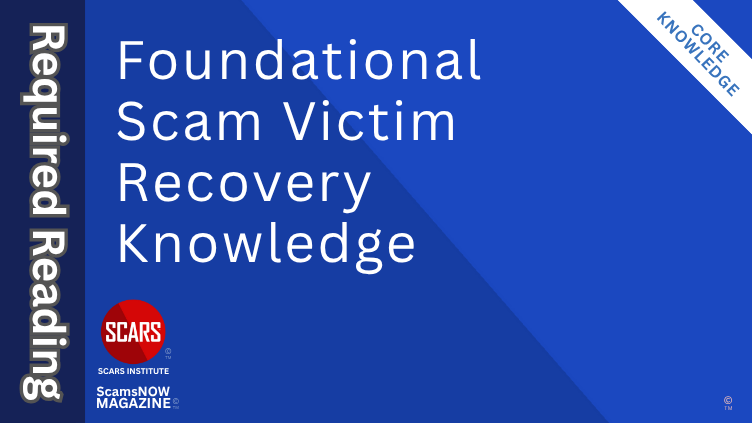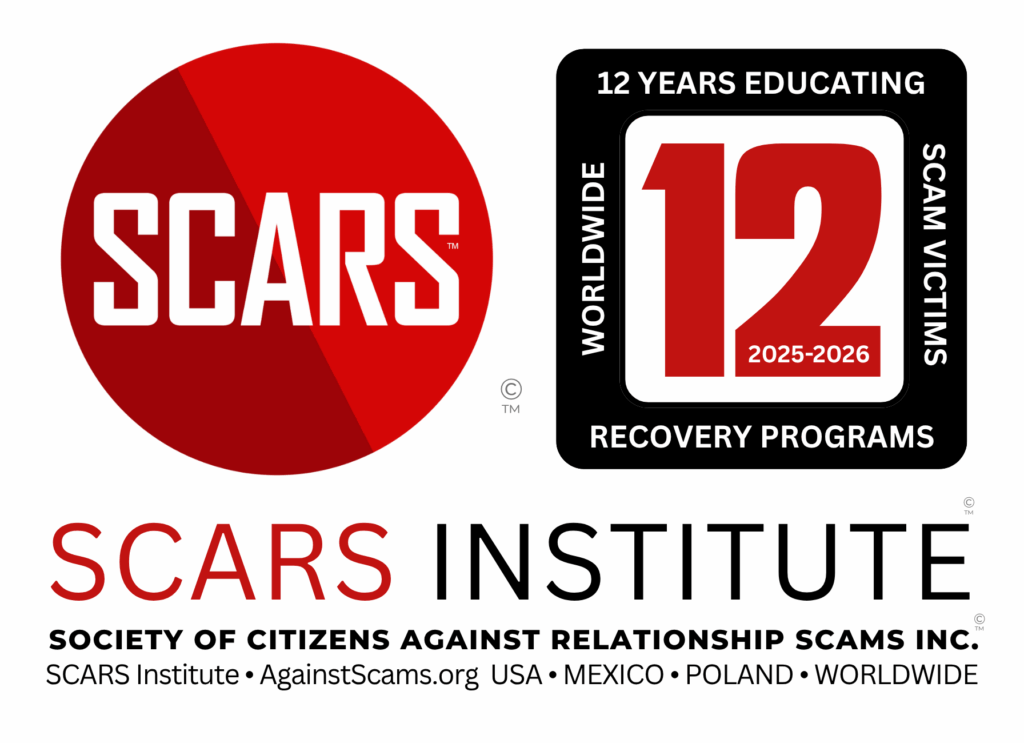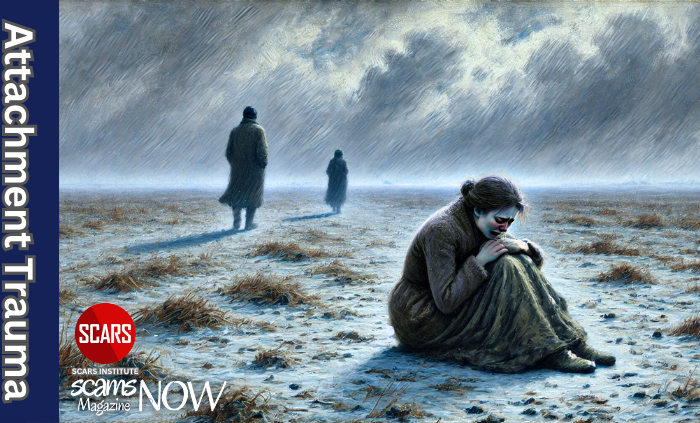Socially Shared Hallucinations (Reality) and Collusive Madness from Scam Victims Struggling to Recover
The Foundation: Understanding Socially Shared Hallucinations (Also Known As ‘Reality’)
Primary Category: Scam Victim Recovery Psychology
Intended Audience: Scam Victims-Survivors / Family & Friends
Authors:
• Vianey Gonzalez B.Sc(Psych) – Licensed Psychologist, Specialty in Crime Victim Trauma Therapy, Neuropsychologist, Certified Deception Professional, Psychology Advisory Panel & Director of the Society of Citizens Against Relationship Scams Inc.
• Tim McGuinness, Ph.D., DFin, MCPO, MAnth – Anthropologist, Scientist, Polymath, Director of the Society of Citizens Against Relationship Scams Inc.
About This Article
Scam victims often face a deep psychological rupture that goes far beyond the scam itself—what’s shattered is their perception of reality, trust, and self-worth. Drawing on R.D. Laing’s concept of “socially shared hallucinations” and “collusive madness,” this article explores how victims are not only manipulated by scammers but also invalidated by a society that refuses to acknowledge the complexity of their trauma.
The emotional disorientation they feel—the collapse between the world they believed in and the reality they now face—is often compounded by external judgment and internalized shame. Recovery, then, is not simply about “moving on” or regaining control; it’s about rejecting society’s false expectations of sanity, reclaiming internal authority, and rebuilding a reality grounded in emotional truth rather than performance.
Victims must learn to trust their inner world again, despite the contradictions they encounter both within and around them. This is not madness—it’s the hard, necessary work of psychological survival and integrity.

The Foundation: Understanding Socially Shared Hallucinations (Also Known As ‘Reality’)
R.D. Laing, a Scottish psychiatrist and philosopher, was known for challenging conventional ideas about mental illness, especially in the context of family systems and society. When he says “the texture of the fabric of socially shared hallucinations is what we call reality, and our collusive madness is what we call sanity,” he’s making a profound critique of how society defines both reality and sanity.
Let’s break this down.
“Socially Shared Hallucinations”
Laing is pointing out that much of what we accept as “reality” isn’t an objective, neutral truth—it’s a set of shared beliefs, assumptions, and norms that we collectively agree to treat as real. These could include ideas about success, gender roles, morality, power, or normal behavior. They’re not necessarily grounded in fact, but they become real because everyone behaves as if they are.
In this sense, a “hallucination” doesn’t mean someone seeing pink elephants—it means a distorted or constructed way of seeing the world. And when that distortion is shared widely, it becomes invisible. We don’t question it because it’s so familiar. That’s what makes it powerful—and dangerous.
“Collusive Madness”
Laing’s use of the word “collusive” points to the fact that we’re not just passive participants in this constructed reality—we actively cooperate in maintaining it. We go along with social rules, expectations, and performances, even if they harm us or make no logical sense. Why? Because we’re afraid of being seen as crazy, or as outsiders.
This is what he means by “madness”—a collective agreement to live in ways that are disconnected from authenticity, emotional truth, or human dignity. We call this sanity because it fits the norm. But Laing is arguing that just because something is widespread doesn’t mean it’s healthy or rational.
What Laing is Really Saying
He’s challenging the assumption that mentally ill individuals are “crazy” while the rest of us are “sane.” Instead, he flips the lens: perhaps what we call “sanity” is just a socially reinforced way of being disconnected from ourselves and from truth. And perhaps some “madness” is a rational response to an irrational system.
Laing was especially focused on how family systems and social expectations could create inner conflict, leading to mental breakdowns—not because something is wrong inside the person, but because they are reacting to contradictions, lies, or coercions in the environment.
Why This Still Matters
In today’s context—especially in discussions of trauma, emotional abuse, social media, or manipulation—Laing’s insight is still relevant. People who challenge social norms are often pathologized. Victims of manipulation are told they’re overreacting. And societal dysfunction gets labeled as normal.
Laing reminds us to always question who defines “reality” and who benefits from that definition.
How This Applies to Scam Victims in Their Journey
For scam victims, R.D. Laing’s insight into “socially shared hallucinations” and “collusive madness” becomes particularly useful when trying to understand why post-scam recovery feels so confusing, isolating, and painful—far beyond the actual event itself. The scam itself is often just the beginning. What follows is a slow and disorienting process of realizing that not only was your trust violated by one person, but your entire perception of the world, your relationships, and even yourself may have been quietly reshaped under that influence. What felt emotionally and psychologically real during the scam now appears false, and that contrast is not only destabilizing—it can feel like a form of madness.
When victims begin to talk about what happened, they often face subtle (or overt) social pressure to minimize their experience. Comments like “Why didn’t you see the signs?” or “I would never fall for that” aren’t just unhelpful—they enforce a version of reality that denies the depth and legitimacy of the victim’s emotional experience. This is what Laing meant by collusive madness: society upholds a shared illusion of sanity by invalidating anything that challenges it. For scam victims, this means having to grieve something no one else saw, explain something no one else understands, and often carry shame for a story that others would prefer remain invisible.
The result is a deeply fractured reality. The victim isn’t just trying to process what happened—they’re also trying to reconcile three conflicting versions of truth: the scammer’s constructed reality, their own emotionally invested reality during the scam, and the social world that now treats them as foolish or naïve. Laing’s framework gives language to this chaos. It helps scam survivors see that their internal confusion is not a sign of weakness, but a natural reaction to being trapped between incompatible realities. And understanding this is often the first step toward recovery—not because it makes the pain disappear, but because it affirms that the disorientation itself is real, valid, and deserving of care.
After the Scam: Reality Becomes Fluid
When someone discovers they’ve been scammed, they are not merely uncovering a lie—they are standing in the middle of a profound psychological collapse. This isn’t the discovery of a single falsehood. It’s the unraveling of an entire reality. A world that once felt emotionally grounded and intimately real suddenly dissolves. What was once solid—your relationship, your memories, your trust, your identity—now appears uncertain, contradictory, even surreal.
You are left asking: What was real? What parts of that were true? Was any of it true?
This is where the work of R.D. Laing becomes incredibly relevant. His statement, “The texture of the fabric of socially shared hallucinations is what we call reality,” is not an abstract philosophical observation—it’s a precise diagnosis of what happens when a person’s psychological scaffolding collapses under the weight of emotional betrayal. After a scam, reality becomes something unstable, fluid, and terrifying.
For a scam victim, reality had been carefully built—not just by the scammer’s lies, but by the victim’s own emotional investment in those lies. The daily text messages, the video calls, the shared goals, the emotional intimacy—all of these were part of a carefully constructed shared narrative. And for many victims, that narrative wasn’t just accepted—it was nurtured. They helped build it. They defended it. They made decisions around it. They internalized it.
- “He loves me.”
- “We’re building a life together.”
- “I’ve finally found someone I can trust.”
These were not naïve delusions. They were the emotional frameworks required to function inside the relationship. In Laing’s terms, they were part of the “socially shared hallucination”—a reality co-authored between scammer and victim. But when the scam is exposed, that hallucination shatters. What follows is not clarity—it is chaos.
Suddenly, everything becomes suspect:
- Every word he said.
- Every photo she sent.
- Every late-night confession.
- Every “I love you.”
You begin to question not just what the scammer did, but who you were while it was happening. And that’s where the trauma deepens.
This collapse isn’t just about external facts. It’s internal. Emotional. Existential. The victim’s sense of self—once anchored to their ability to judge, to choose, to love, to protect—feels corrupted. They are not just grieving the scammer’s deception. They are grieving the version of themselves who believed it. And that grief is disorienting.
You might find yourself saying:
- “I don’t trust my own mind anymore.”
- “If I could fall for this, what else am I wrong about?”
- “Was I ever really in control of anything?”
This is not melodrama. This is the real cost of psychological violation. The scam didn’t just steal money or time—it destabilized your internal compass. You’re no longer sure what signals to follow, because the ones you trusted most led you straight into danger.
Laing would say that the line between sanity and madness isn’t as fixed as we like to think. And in moments like these, you can feel that firsthand. You might look at yourself in the mirror and not recognize the person staring back. You might replay conversations in your head and hear them differently—like you’re listening to a ghost version of your former life. You might feel like you’re floating between two conflicting worlds: the one where it was all real, and the one where it was all a lie.
And here’s the cruelest part: the rest of the world often doesn’t see your suffering.
You try to explain what happened, and people say:
- “How could you not know?”
- “Why did you give them money?”
- “You must have been desperate.”
They are still living in the “shared hallucination” of social sanity—the myth that competent, intelligent people don’t get scammed. So your pain isn’t just private—it’s invalidated. Your internal disorientation is now compounded by external misunderstanding. You’re grieving in a world that doesn’t even recognize your loss.
And so, some victims retreat. They stop telling the story. They pretend to be “okay.” They perform competence, they downplay their wounds, they pretend they’ve moved on—all to avoid the social rejection that comes with deviating from the expected script. This, again, is Laing’s “collusive madness”: the silent agreement to uphold a version of reality that denies emotional truth.
But the truth matters.
And the truth is: your reality was real to you. Your emotions were real. Your experience was real. What was done to you was calculated, predatory, and designed to override your inner compass. That doesn’t make you broken. That makes you human.
The path forward is not to deny the collapse—but to walk through it. To acknowledge the disorientation. To sit with the fear, the shame, the grief. To slowly rebuild your inner framework, this time with the tools of self-awareness, boundaries, support, and emotional honesty.
Reality may have felt fluid after the scam. But truth—your truth—is what begins to solidify it again.
You do not need to return to the person you were before. That person didn’t have the knowledge you have now. That person hadn’t yet survived this. You are not just someone who was deceived. You are someone who is now learning to see more clearly—through the collapse, through the confusion, into something deeper, wiser, and more grounded.
This is not the end of your reality.
It’s the beginning of one you choose to build—on truth, not illusion. On clarity, not performance. On healing, not hiding.
That’s what recovery begins to look like.
Internal Disorientation: The Battle of Competing Realities
When a scam ends, it doesn’t truly end for the victim. Instead, what begins is a psychological struggle between multiple realities—each one pulling at their sense of self in different ways. It’s not simply a matter of “moving on” or accepting that they were deceived. It’s about trying to reassemble a fractured worldview under enormous emotional pressure.
This is what ‘cognitive dissonance’ means!
First, there is the constructed reality they lived in during the scam. This was not imaginary in their mind—it was experienced as real. The conversations were real. The emotions were real. The trust was real. Whether they believed they were in a romantic relationship, helping a friend in need, or involved in a promising business opportunity, they invested emotionally, mentally, and often financially. That version of reality felt coherent. It made sense at the time. It was lived reality.
Then, once the scam is exposed, the objective reality slams into place. The person was not who they claimed to be. The entire relationship was a manipulation. There was no love. No shared future. No investment. No crisis to solve. Just deliberate exploitation. What the victim had accepted as real was, in fact, orchestrated deception. This realization alone is psychologically destabilizing—it forces the victim to question their memory, their intuition, and their very ability to distinguish truth from fiction.
But it doesn’t stop there.
Overlaying this personal collapse is the social reality—a public perception that often minimizes, dismisses, or outright blames the victim for what happened. This is where things become even more painful. Victims soon discover that many people—friends, family, colleagues—don’t understand the depth of the manipulation. They might offer simplistic advice: “You should’ve known better.” Or condescending pity: “That’s why I don’t talk to strangers online.” Some may even insinuate that the victim was complicit, motivated by greed or naivety.
This is what R.D. Laing called collusive madness: the shared, unexamined cultural belief that “normal, smart people” don’t get scammed. Society maintains the illusion that we’re all immune to deception if we just follow common sense. That hallucination serves to protect those who haven’t experienced it—but it isolates those who have. The scam victim, already battling private grief and shattered identity, is now forced to carry that pain in a world that invalidates it.
The social hallucination becomes: “You must have wanted something.” “You were desperate.” “Only fools fall for that.” These aren’t just opinions—they’re psychological weights. They silence victims. They turn recovery into a performance. You feel the pressure to “be okay,” to explain yourself, to hide the depth of your loss so others won’t look at you differently.
This convergence of internal collapse and external misunderstanding creates a kind of emotional vertigo. The victim lives between worlds:
-
The one they once believed in.
-
The one they must now accept.
-
And the one they must pretend to be in, so they don’t face more judgment.
This psychological split can have long-term consequences. Many victims report feeling like they’ve lost not just trust in others, but trust in themselves. Their inner compass feels broken. If they could mistake a scam for love—or loyalty, or opportunity—how can they trust anything they feel again?
That is the internal disorientation. That is the battle of competing realities. And it doesn’t resolve on its own. This is the cognitive dissonance that almost all victims experience.
Healing from a scam isn’t just about getting past the loss. It’s about slowly, patiently reconstructing a grounded internal reality—one that validates the pain, integrates the truth, and resists the social pressure to sanitize the experience.
Without this reconstruction, the victim is left suspended—unable to return to who they were, but not yet confident in who they’re becoming. And until that new foundation is built, the trauma doesn’t just live in memory. It lives in everything—in every new connection, every financial decision, every moment of vulnerability.
This is why scam recovery must address not just the event, but the psychological fragmentation that follows and provide a philosophical basis for why it matters. Because the hardest part isn’t that you were lied to.
It’s that, for a time, the lie became your reality.
Shame, Self-Blame, and the Collapse of Internal Authority
After the exposure of a scam, one of the most immediate and corrosive emotions that takes hold is shame. Not guilt in the moral sense—but shame in the existential sense. A feeling that you yourself are defective. That something inside you was so weak, so naïve, or so broken that it allowed this to happen. And once that shame sets in, it doesn’t stay confined to the facts of what happened. It spreads—infecting how you see your past, your judgment, your relationships, even your future.
This is where the collapse of internal authority begins.
R.D. Laing’s work on the nature of sanity offers a clear lens here. He argued that what we often call “sanity” is actually a form of conformity—an agreement to behave in ways that soothe or fit with social expectations, even if they contradict one’s private emotional reality. In the context of scam recovery, this plays out in subtle but destructive ways. Scam victims often feel pressure—not just from society, but from themselves—to suppress their emotional truth in order to preserve a sense of control or dignity.
They start bargaining with their trauma: “If I had just seen the signs.” “If I hadn’t sent that last payment.” “If I had listened to my gut.” These thoughts aren’t reflections. They’re attempts to rewrite history in order to avoid the unbearable truth: that their agency was breached. That they were deceived by something so skillfully constructed, so personally tailored, that it bypassed all their defenses.
To admit that truth requires facing a level of vulnerability many people aren’t prepared for. So instead, victims unconsciously shift the blame onto themselves. It feels better to think, “I failed,” than to admit, “I was violated.” Because if you failed, you can fix it. But if you were violated, you have to face how powerless you were. And that’s terrifying.
But here’s what gets lost in that shame spiral: this isn’t rational thinking—it’s emotional survival. The self-blame becomes a coping mechanism. It gives you a sense that you were still in control, even when you weren’t. It’s the mind’s attempt to make order out of emotional chaos. A way to restore coherence by inventing a version of events where you could have done something differently. But the truth is, you were not equipped to see it coming. The scammer exploited not your weaknesses, but your strengths: your empathy, your hope, your trust.
When internal authority collapses, the scam victim begins to doubt everything. Not just what happened, but what they know. What they feel. What they see. “If I believed that person was real, and they weren’t, how can I ever trust my judgment again?” “If I missed the lies before, what am I missing now?” This leads to a dangerous kind of self-dismantling. A refusal to trust even the parts of you that are still intact. And if left unchecked, it can lead to deep dissociation—not from reality, but from your own sense of who you are.
This isn’t madness. It’s a mind doing exactly what Laing described: trying to reconstruct a coherent identity after an internal rupture. The tragedy is that many victims feel pressure to hide this process—to “move on,” to “get over it,” to smile and say, “I learned my lesson,” when inside, they’re still unraveling. Because when they try to express the depth of their disorientation or shame, they’re often met with confusion, judgment, or dismissal.
So they perform.
They put on a mask of resilience. They nod along when someone says, “At least you caught it before it got worse.” They deflect their own story with humor, or brush it off with phrases like, “Well, lesson learned.” But underneath, the trauma remains unspoken. And that performance—the denial of one’s own emotional truth for the comfort of others—is Laing’s collusive madness. Participating in a shared illusion that everything is fine when, in reality, the self is still in pieces.
The problem with this illusion is that it offers short-term social comfort, but long-term psychological damage. When your emotional reality is silenced—either by others or by your own fear of being seen—you stop healing. You stay stuck in a limbo between what you feel and what you’re allowed to express. And that gap can turn into chronic isolation, depression, and self-loathing.
The only way out is to reclaim your internal authority.
This doesn’t mean pretending you’re okay. It means giving yourself permission to not be okay—and to trust that your confusion, your pain, your shame are not signs of failure. They are the residue of a violation. And they deserve to be acknowledged, processed, and respected.
Reclaiming your authority means believing that your reality—even if it’s messy or hard to explain—is still valid. That your grief is real. That your questions matter. That your healing doesn’t have to be palatable to anyone else. It means moving from a posture of performance to a position of honesty. From bargaining with trauma to sitting with it, learning from it, and slowly integrating it.
Because only then can you rebuild a self that is not fractured by shame, but strengthened by truth.
You don’t have to be what others need you to be. You don’t have to wear the mask. You have the right to your own story—unpolished, raw, real. And by owning it, you begin to repair the authority that was taken from you—not just by the scam, but by the silence that followed it.
Rebuilding Sanity on New Terms
The path forward for scam victims involves rejecting society’s false standards of “sanity” and beginning the much harder work of constructing a new, authentic inner reality—one grounded not in shame, but in truth. Not biased truth, not emotional truth, but as radical andauthentic as you can make it.
This process requires:
-
Validating their emotional reality, even when others deny it.
-
Understanding that the scam was not a reflection of their intelligence or worth, but of their human capacity to hope, connect, and trust.
-
Accepting that their old self-concept may never fully return, but that a wiser, more resilient version of self can emerge.
-
Seeing through the social hallucinations—the myths that “this only happens to stupid people,” or “if you were strong, you’d be over it by now.”
Recovery means rebuilding not just trust in others, but trust in your own mind. And that includes learning to tell the difference between internalized shame and authentic insight.
Conclusion: Rebuilding Truth from the Collapse
What scam victims endure is not simply the loss of money or time—it is a profound rupture in the architecture of their personal reality. R.D. Laing’s work helps illuminate this experience by offering a vocabulary and framework for something that many survivors feel but struggle to articulate: the sense that their reality, their trust, and even their sanity have been hijacked. His concept of “socially shared hallucinations” shows us that what we accept as real is often shaped by consensus, not truth. And his warning about “collusive madness” reminds us that pretending everything is fine—just to make others comfortable—is not healing. It is a trap.
Scam survivors are not rebuilding a damaged reputation; they are rebuilding the very foundation of self-trust. They are learning to live in a world that punished them for trusting and now asks them to trust again—without giving them any new tools, support, or understanding. That’s why recovery must go deeper than surface reassurance. It must be grounded in authenticity. In emotional integrity. In the right to name your pain even when others can’t or won’t understand it.
Laing’s insights matter because they give us permission to call this disorientation what it is: not foolishness, not mental weakness, but a rational response to being deceived in a world that often prefers illusion over truth. If you’ve been through a scam, and you’re struggling to make sense of what’s real and what’s not, you’re not broken—you’re awakening. And in that awakening lies your strength. You don’t need to collapse quietly inside a performance of wellness. You have the right to name your disorientation, to confront the hallucinations, and to reconstruct a reality that honors what you’ve been through and who you’re becoming.
That isn’t madness. That’s survival. And more than that—it’s sanity. On your own terms.
Please Rate This Article
Please Leave Us Your Comment Below
Also, tell us of any topics we might have missed.
-/ 30 /-
What do you think about this?
Please share your thoughts in a comment above!
-/ 30 /-
What do you think about this?
Please share your thoughts in a comment above!
ARTICLE RATING
TABLE OF CONTENTS
- The Foundation: Understanding Socially Shared Hallucinations (Also Known As ‘Reality’)
- About This Article
- The Foundation: Understanding Socially Shared Hallucinations (Also Known As ‘Reality’)
- How This Applies to Scam Victims in Their Journey
- After the Scam: Reality Becomes Fluid
- Internal Disorientation: The Battle of Competing Realities
- Shame, Self-Blame, and the Collapse of Internal Authority
- Rebuilding Sanity on New Terms
- Conclusion: Rebuilding Truth from the Collapse
CATEGORIES
U.S. & Canada Suicide Lifeline 988
![NavyLogo@4x-81[1] Socially Shared Hallucinations (Reality) and Collusive Madness from Scam Victims Struggling to Recover - 2025](https://scamsnow.com/wp-content/uploads/2025/04/NavyLogo@4x-811.png)
ARTICLE META
Important Information for New Scam Victims
- Please visit www.ScamVictimsSupport.org – a SCARS Website for New Scam Victims & Sextortion Victims.
- SCARS Institute now offers its free, safe, and private Scam Survivor’s Support Community at www.SCARScommunity.org – this is not on a social media platform, it is our own safe & secure platform created by the SCARS Institute especially for scam victims & survivors.
- SCARS Institute now offers a free recovery learning program at www.SCARSeducation.org.
- Please visit www.ScamPsychology.org – to more fully understand the psychological concepts involved in scams and scam victim recovery.
If you are looking for local trauma counselors, please visit counseling.AgainstScams.org
If you need to speak with someone now, you can dial 988 or find phone numbers for crisis hotlines all around the world here: www.opencounseling.com/suicide-hotlines
Statement About Victim Blaming
Some of our articles discuss various aspects of victims. This is both about better understanding victims (the science of victimology) and their behaviors and psychology. This helps us to educate victims/survivors about why these crimes happened and not to blame themselves, better develop recovery programs, and help victims avoid scams in the future. At times, this may sound like blaming the victim, but it does not blame scam victims; we are simply explaining the hows and whys of the experience victims have.
These articles, about the Psychology of Scams or Victim Psychology – meaning that all humans have psychological or cognitive characteristics in common that can either be exploited or work against us – help us all to understand the unique challenges victims face before, during, and after scams, fraud, or cybercrimes. These sometimes talk about some of the vulnerabilities the scammers exploit. Victims rarely have control of them or are even aware of them, until something like a scam happens, and then they can learn how their mind works and how to overcome these mechanisms.
Articles like these help victims and others understand these processes and how to help prevent them from being exploited again or to help them recover more easily by understanding their post-scam behaviors. Learn more about the Psychology of Scams at www.ScamPsychology.org
SCARS INSTITUTE RESOURCES:
If You Have Been Victimized By A Scam Or Cybercrime
♦ If you are a victim of scams, go to www.ScamVictimsSupport.org for real knowledge and help
♦ SCARS Institute now offers its free, safe, and private Scam Survivor’s Support Community at www.SCARScommunity.org – this is not on a social media platform, it is our own safe & secure platform created by the SCARS Institute especially for scam victims & survivors.
♦ Enroll in SCARS Scam Survivor’s School now at www.SCARSeducation.org
♦ To report criminals, visit https://reporting.AgainstScams.org – we will NEVER give your data to money recovery companies like some do!
♦ Follow us and find our podcasts, webinars, and helpful videos on YouTube: https://www.youtube.com/@RomancescamsNowcom
♦ Learn about the Psychology of Scams at www.ScamPsychology.org
♦ Dig deeper into the reality of scams, fraud, and cybercrime at www.ScamsNOW.com and www.RomanceScamsNOW.com
♦ Scam Survivor’s Stories: www.ScamSurvivorStories.org
♦ For Scam Victim Advocates visit www.ScamVictimsAdvocates.org
♦ See more scammer photos on www.ScammerPhotos.com
You can also find the SCARS Institute’s knowledge and information on Facebook, Instagram, X, LinkedIn, and TruthSocial
Psychology Disclaimer:
All articles about psychology and the human brain on this website are for information & education only
The information provided in this and other SCARS articles are intended for educational and self-help purposes only and should not be construed as a substitute for professional therapy or counseling.
Note about Mindfulness: Mindfulness practices have the potential to create psychological distress for some individuals. Please consult a mental health professional or experienced meditation instructor for guidance should you encounter difficulties.
While any self-help techniques outlined herein may be beneficial for scam victims seeking to recover from their experience and move towards recovery, it is important to consult with a qualified mental health professional before initiating any course of action. Each individual’s experience and needs are unique, and what works for one person may not be suitable for another.
Additionally, any approach may not be appropriate for individuals with certain pre-existing mental health conditions or trauma histories. It is advisable to seek guidance from a licensed therapist or counselor who can provide personalized support, guidance, and treatment tailored to your specific needs.
If you are experiencing significant distress or emotional difficulties related to a scam or other traumatic event, please consult your doctor or mental health provider for appropriate care and support.
Also read our SCARS Institute Statement about Professional Care for Scam Victims – click here
If you are in crisis, feeling desperate, or in despair, please call 988 or your local crisis hotline.
More ScamsNOW.com Articles
A Question of Trust
At the SCARS Institute, we invite you to do your own research on the topics we speak about and publish. Our team investigates the subject being discussed, especially when it comes to understanding the scam victims-survivors’ experience. You can do Google searches, but in many cases, you will have to wade through scientific papers and studies. However, remember that biases and perspectives matter and influence the outcome. Regardless, we encourage you to explore these topics as thoroughly as you can for your own awareness.

























![scars-institute[1] Socially Shared Hallucinations (Reality) and Collusive Madness from Scam Victims Struggling to Recover - 2025](https://scamsnow.com/wp-content/uploads/2025/04/scars-institute1.png)
![niprc1.png1_-150×1501-1[1] Socially Shared Hallucinations (Reality) and Collusive Madness from Scam Victims Struggling to Recover - 2025](https://scamsnow.com/wp-content/uploads/2025/04/niprc1.png1_-150x1501-11.webp)
